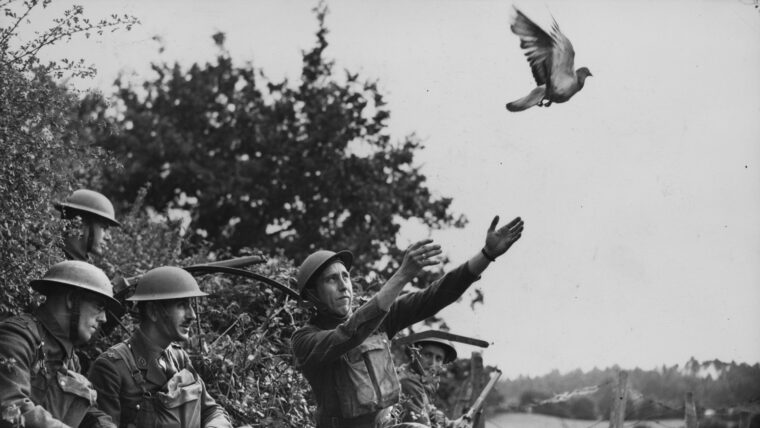
Russia’s Time of Troubles
The Varangians founded a number of fortified towns in Slavic Russia in the 9th century that would become seats of Eastern Christian principalities. Read more

The Varangians founded a number of fortified towns in Slavic Russia in the 9th century that would become seats of Eastern Christian principalities. Read more

Lines of drab-uniformed soldiers emerged from their night march and moved down a forested road into open country on September 26, 1918. Read more

Lieutenant William Paul Chapman’s fellow soldiers were tank hunting on the afternoon of August 11, 1944. The Battle of Mortain was raging around them, a counterattack by a German armored spearhead against the growing and inexorable advance of the Allied armies out of the Normandy beachhead. Read more

The great British Royal Navy victory at Cape Matapan sealed the fate of the Italian Regia Marina, rendering Mussolini’s fleet virtually impotent after the spring of 1941. Read more

The German push west came to a violent end.
On December 19, 1944, the Panther and King Tiger tanks of SS Lt. Read more

For the most part, World War II left the U.S. and Canadian homelands physically untouched. There were a few incidents of sabotage and a few small-scale attacks, such as a Japanese submarine’s shelling of an oil refinery in southern California and balloon bombs launched from Japan that floated over the Pacific and set fires in the western United States and Canada. Read more

On October 28, ad 312, a Roman emperor was drowning. The sight must have amazed his soldiers. All summer Rome had been filled with rumors of the western emperor, Constantine, and the ease with which he and his army had crossed the Alps and, once on Italian soil, strung together a handful of victories in the north. Read more

Wind lifted away the fog sheltering the French lines. Atop a low ridge where the French army was deployed, a lone windmill provided a vivid range marker for 58 Prussian cannons on the neighboring hills. Read more

With war comes untold stories of unbroken spirits. These are universal stories without bounds and sides, some of which remain buried deep in psyches. Read more

It was Christmas Day, 1944. A U.S. Navy C-47 Skytrain with five men aboard was en route from Naval Air Station, Olathe, Kansas, to Columbus, Ohio. Read more

It took only moments for a golden opportunity to turn into a trap. Several days of pursuit in October 1863 through northern Virginia at last brought Lt. Read more

Battlefield communications are often a matter of life and death to individual soldiers and serve to determine not only the outcome of battles but entire wars. Read more

Lt. Gen. Mark Clark’s Fifth Army, comprising the U.S. VI and British X Corps, headed north from the Salerno battlefield in September 1943, German Field Marshal Albert Kesselring, commander of Army Group C in southern Italy, implemented new defensive tactics and fortifications. Read more

When Marine Private Donald Versaw arrived on the fortress island of Corregidor in the Philippines on December 28, 1941, three weeks after Pearl Harbor, he was impressed by how normal everything looked. Read more

In the winter of 1944-1945, within Belgium’s Ardennes Forest, better known as the launching pad of the Battle of the Bulge, two war crimes were committed. Read more

Recently, I saw an article about American MIAs—those service members who went “missing in action” during World War II—and, frankly, was taken aback. Read more

By Eric Niderost
King Frederick II of Prussia was busy writing dispatches, his face a study of grim determination as he scribbled out the words by the light of a guttering candle. Read more

British naval operations in the Far East in World War II started badly and went downhill from there. Read more

Quality aircraft combat games aren’t exactly a dime a dozen, and publisher Iggymob aims to fill in that hole with the upcoming Dogfighter: World War 2, which is currently in development collaboratively with iBong and Grumpy for PlayStation 4. Read more

“Our mission was Berlin. We flew in that dreaded position—last and lowest in the squadron.”
Archie Mathosian, B-17 Radio Operator, A/C #521 (Skyway Chariot), 100th Bomb Group (H), USAAF
“Last and lowest in the squadron.”These Read more